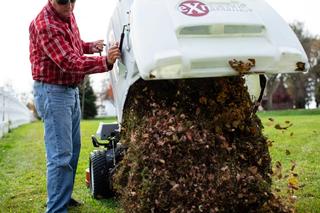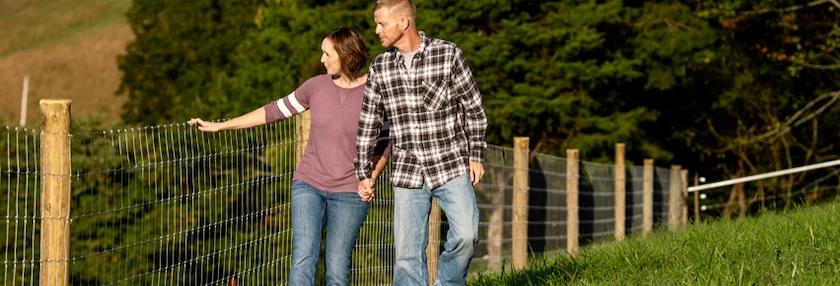Get Ahead of Winter Weather
Essential Barn Prep for Colder Months


Winter brings challenges for any acreage, and your barn is at the center of it all. It houses livestock, protects feed and equipment and keeps your daily chores running smoothly. Preparing it for cold weather isn’t just about comfort — it’s about protecting one of your most valuable assets.
A few proactive steps now can prevent costly repairs, reduce stress and keep everything working efficiently when temperatures drop.
Start With a Thorough Inspection
Walk your barn inside and out before cold weather sets in. Look for loose boards, broken windows, missing shingles and gaps in the walls or roof that could let in drafts — or worse, rodents. Even small openings can create big problems. Sliding doors deserve extra attention since they’re notoriously leaky. Consider adding compression seals, brush-style sweeps and flashing above tracks to keep the cold out while allowing smooth operation.
A simple way to detect hidden drafts? Try the “toilet paper test”: hold a square near doors, windows or seams and watch for movement. Seal up unwanted leaks but remember that a barn should never be completely airtight — good ventilation remains essential.
Insulation: Warmth Without Waste
Effective insulation helps regulate temperature, control moisture and reduce condensation that leads to rust and mold. It also saves on energy costs while keeping livestock comfortable.
Common barn insulation options include:
- Spray foam: Excellent for ceilings, fully seals air movement.
- Fiberglass batts: Affordable and easy to install.
- Foam boards: Durable and moisture-resistant, great for walls.
Best practices include adding a vapor barrier to prevent condensation, leaving small dead-air spaces for better performance and ensuring proper installation between trusses. Done right, insulation extends your barn’s lifespan and lowers your heating bills.
Light the Way
With shorter days, reliable lighting is critical. Plan for three types:
- Stall lighting: Two fixtures per stall reduce shadows and allow safe animal handling.
- Aisle lighting: Bright, evenly spaced lights make chores safer and more efficient.
- Exterior lighting: Pathway and paddock lights are vital for evening chores.
LED fixtures are a smart choice: they last longer (up to 50,000 hours) and stay bright in cold conditions without generating excess heat. Whatever system you choose, install vapor-tight fixtures in wet areas and keep them mounted at least 8 feet high to minimize contact with animals.
Ventilation: Fresh Air Matters
It’s tempting to shut everything tight when the temperatures dip, but barns still need fresh air. Aim for 4 to 8 air changes per hour in winter. Ideally, indoor temperatures should stay just 5 to 10 degrees Fahrenheit above outdoor levels to prevent humidity buildup.
For naturally ventilated barns, keep eave inlets open about one inch per 10 feet of building width. Never close them completely. Regularly check fans, ridge vents and curtains to ensure proper airflow without letting in icy blasts.
Stop Freeze Damage Before It Starts
Frozen pipes or troughs can turn into costly emergencies. Insulate exposed lines, wrap pipes with heating cables if needed and test all frost-free hydrants and automatic waterers before winter sets in. Heated buckets or de-icers can help in smaller setups, while grouping water troughs creates “heat islands” that keep ice at bay. Simple tricks, such as painting tanks black to absorb sunlight, also help.
Electrical and Heating Safety
Barns demand careful electrical planning in winter. Before the season, have wiring inspected, replace any damaged cords and install ground-fault circuit interrupter outlets in damp areas. Protect wiring with metal conduit to deter rodents, and keep dust and cobwebs cleared away from fixtures to reduce fire risk.
If supplemental heating is necessary, only use equipment designed for agricultural environments. Keep heat lamps and space heaters at least 20 inches from flammable bedding, never leave them unattended and always keep fire extinguishers within reach.
Stock Up on Feed and Bedding
Snowstorms and icy roads can delay deliveries, so plan ahead. Maintain at least a two-week reserve of feed and veterinary supplies. Keep hay in a separate, well-ventilated structure if possible, and protect all storage areas from dampness. Bedding is just as critical: deep, dry layers let livestock nest and conserve body heat. Many farmers use a layered system with sawdust or sand on the bottom for absorption, and straw or shavings on top for insulation.
Equipment and Infrastructure
Don’t forget the tools that keep your farm running. Check antifreeze levels in tractors, service your generator and make sure snow removal equipment is ready to go. Clean gutters, inspect the roof and trim branches that could snap under snow load. Strong winds and heavy ice put extra stress on fences and gates, so secure and repair them now rather than in the middle of a storm.
Fire Safety and Emergency Planning
Winter increases fire risks thanks to heaters, dry bedding and stored fuel. Minimize hazards by keeping flammable materials away from heat sources, maintaining fire extinguishers and installing smoke detectors audible from your home. It’s also wise to coordinate with neighbors on mutual aid, and have a plan for power outages, feed delivery interruptions or extreme weather events.
The Payoff: Peace of Mind
A winter-ready barn isn’t just about comfort — it’s about protecting your animals, extending the life of your buildings and making your own workload easier when the weather turns brutal. With insulation, lighting, draft control and a smart checklist, you’ll ensure that one of your biggest investments is safe, efficient and ready for whatever winter throws at you.
Tags:Seasonal Living

Acreage Life is part of the Catalyst Communications Network publication family.















